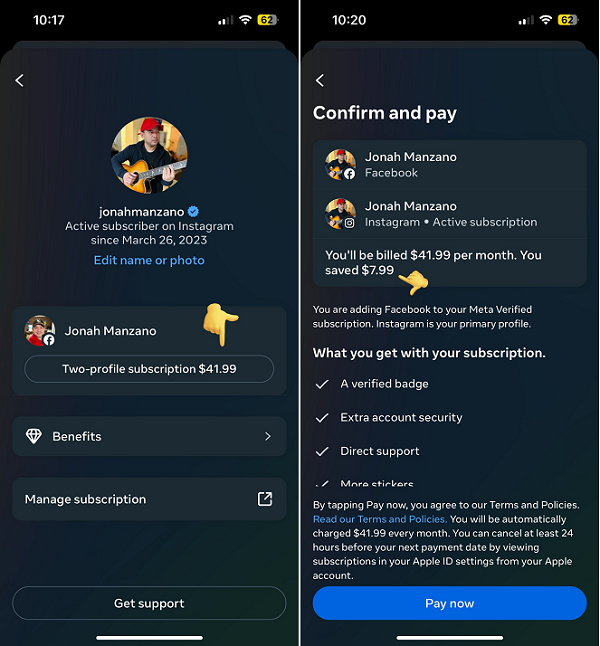If you’re thinking about buying a blue checkmark on Facebook or Instagram, via Meta’s new ‘Meta Verified’ program, in order to artificially inflate your relevance in either app, then have we got a deal for you.
Now, Meta’s offering a new package that will enable you to save money when you sign up to Meta Verified on both platforms, so you can have a blue tick across all of your Meta posts, for the low, low price of…

Okay, $42 per month – or $504 per year – ain’t exactly cheap. But the numbers in this example, posted by Jonah Manzano, are in Australian dollars, so the bundle will be cheaper again in the US (probably). So now, you’ll be able to boost your in-app perception, and trick people into thinking you’re a celebrity, for less than the initial $US11.99 per month for each element.
But it’s still quite expensive. Unfortunately, that’s the price of even fake celebrity, and you do have to individually subscribe to Meta Verified for each app. Ideally, you could just get verified in one, then have a blue tick on both, but Meta’s made it so that you have to sign-up for each individually, in order to squeeze more money out of those who really want to seem important, and use their checkmark to increase the status in the app.
Which, as you can tell from my tone, I don’t think is the best way to go. Selling verification ticks is a sure fire path to eroding the very value of the offering, with the marker gradually losing all relevance, as anybody can now just buy that little symbol.
It still likely holds a little more value on IG and Facebook, because Meta hasn’t gone the next step, like Twitter, in removing legacy checkmarks, meaning that the only ones left in the app are those that are paid. That means that Meta Verified customers are still able to cosplay among the actual high-profile users, while the Meta Verified program also offers dedicated, in-person customer support, which is a big benefit for some subscribers.
But even so, it just doesn’t seem worth the expense. People are more skeptical of what the checkmark now means, and as cynicism grows, users will come to rely on it far less as an indicator of… well anything really.
But some will still see it as a flex, some people will still get excited about seeing the tick next to their username, and the number of people who will pay will likely justify the program, as it will on Twitter too.
But it’s losing its value among the people who actually make it relevant, in terms of actual celebrities, who it’s now become less beneficial for – celebrities who bring users to these apps, and drive massive amounts of engagement.
Which seems like an odd business choice, but here we are.



